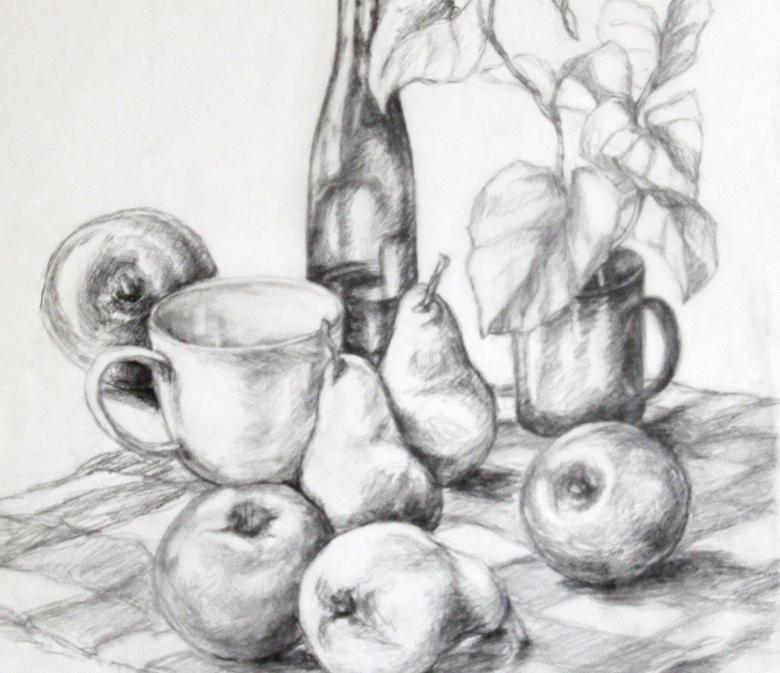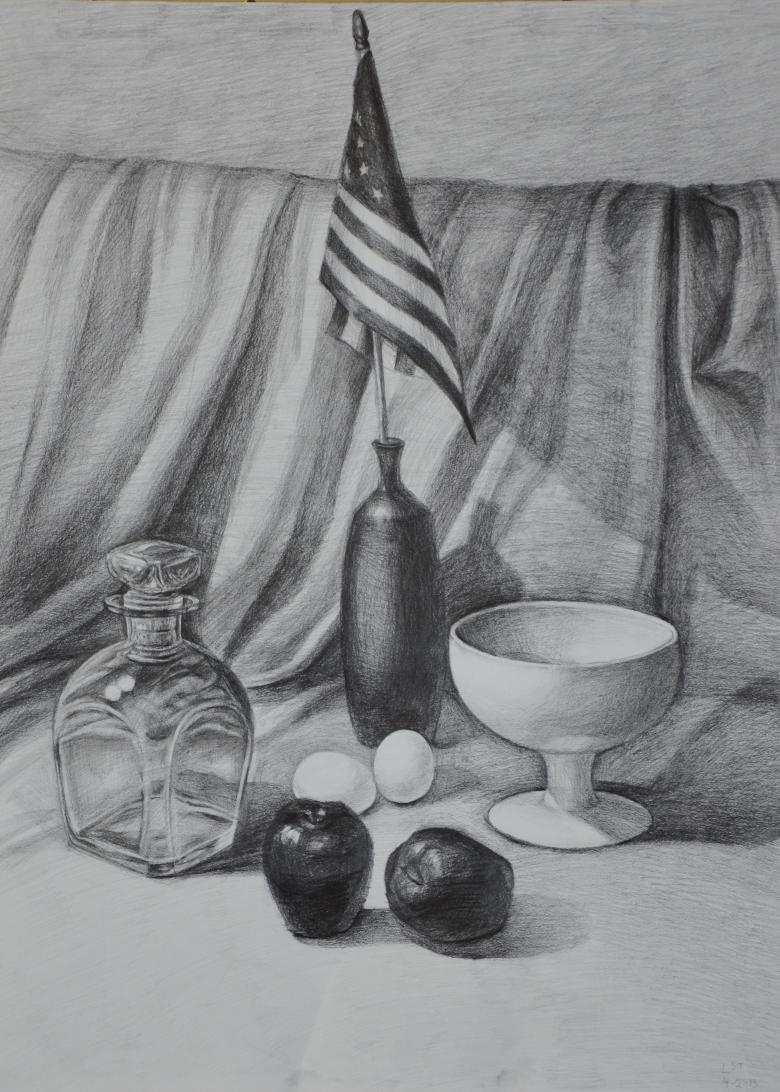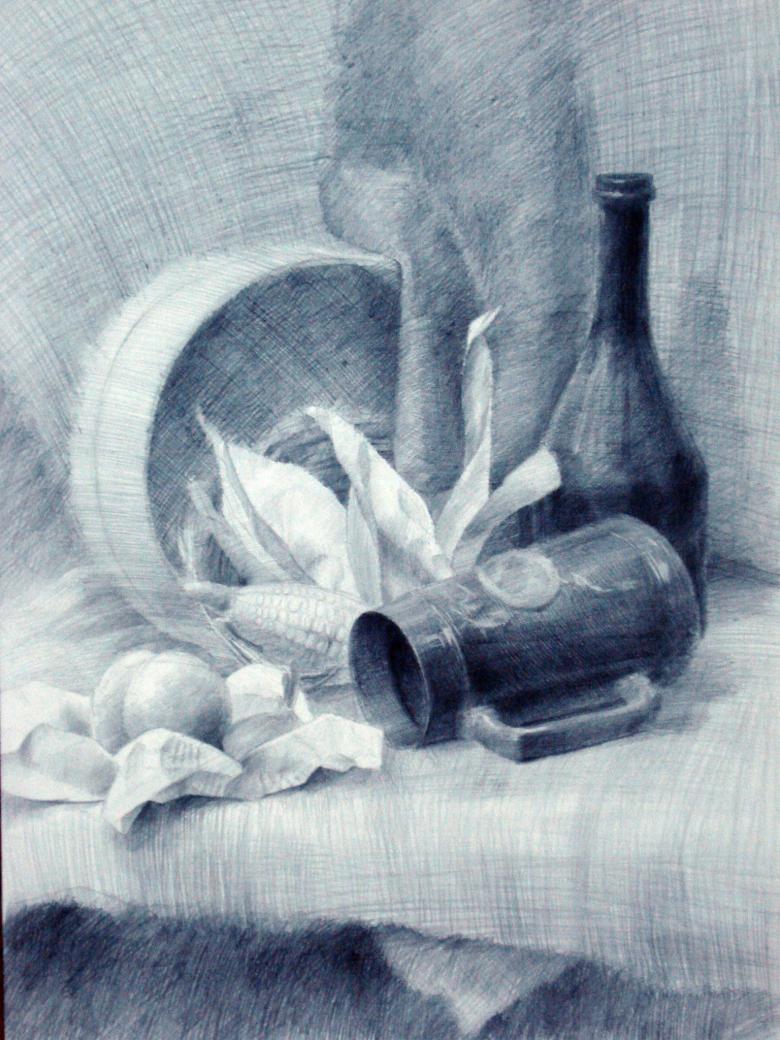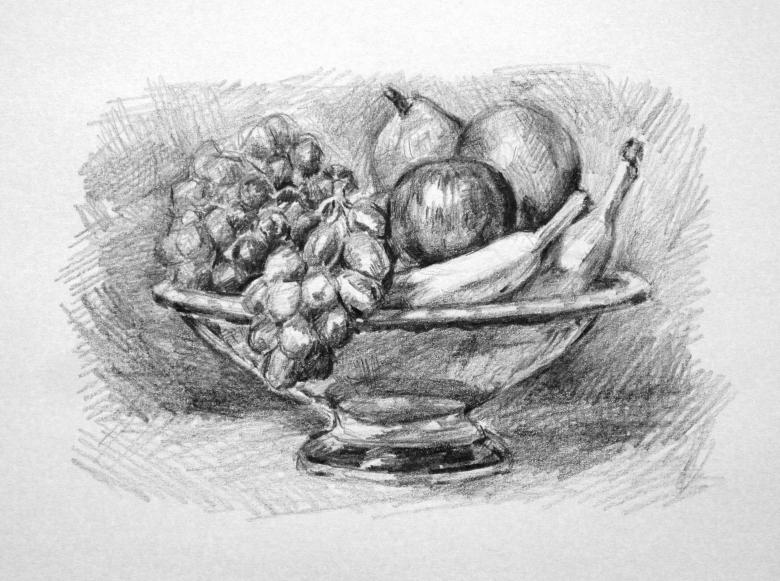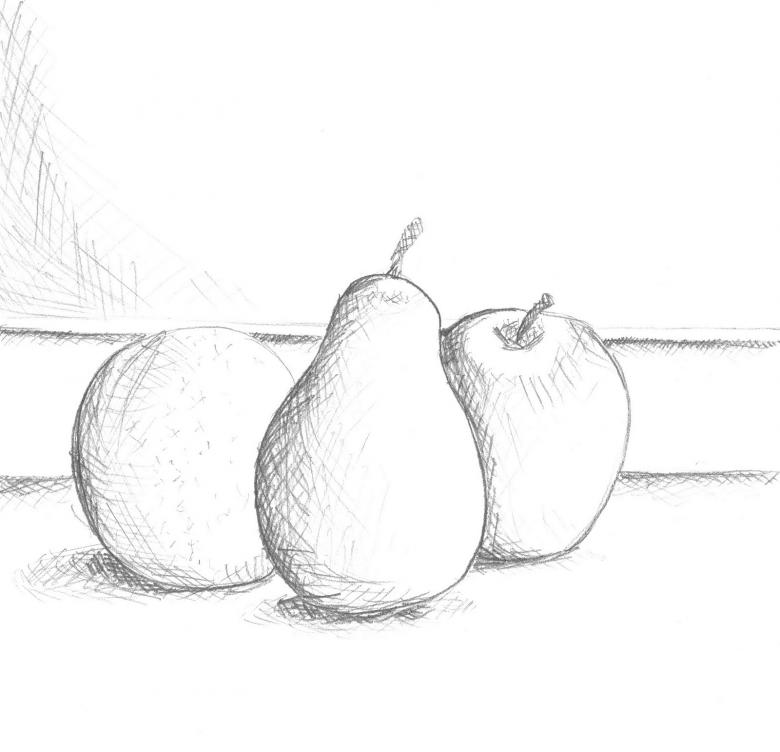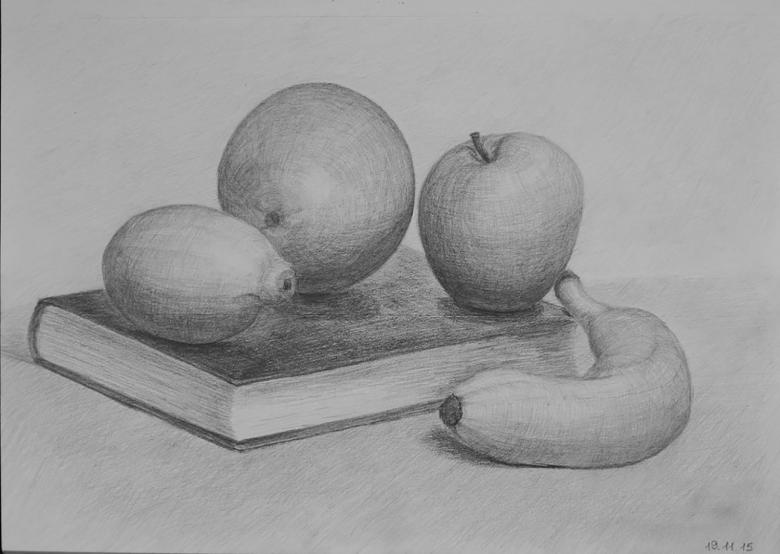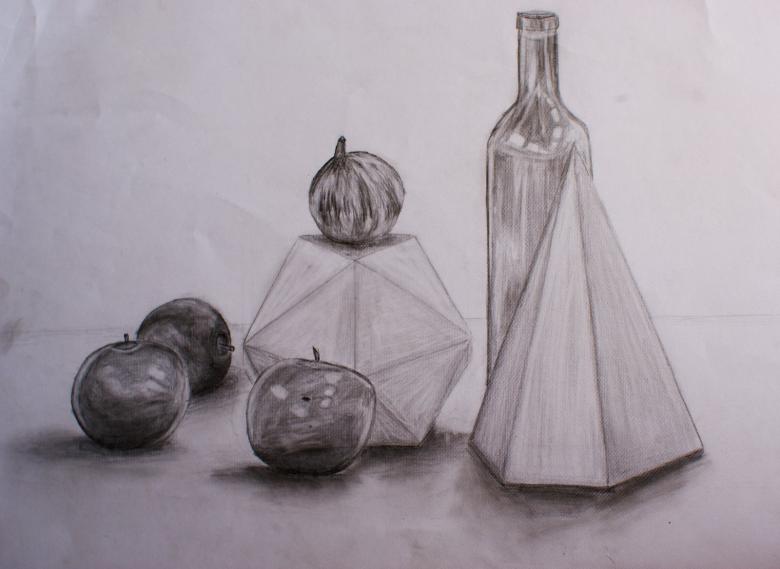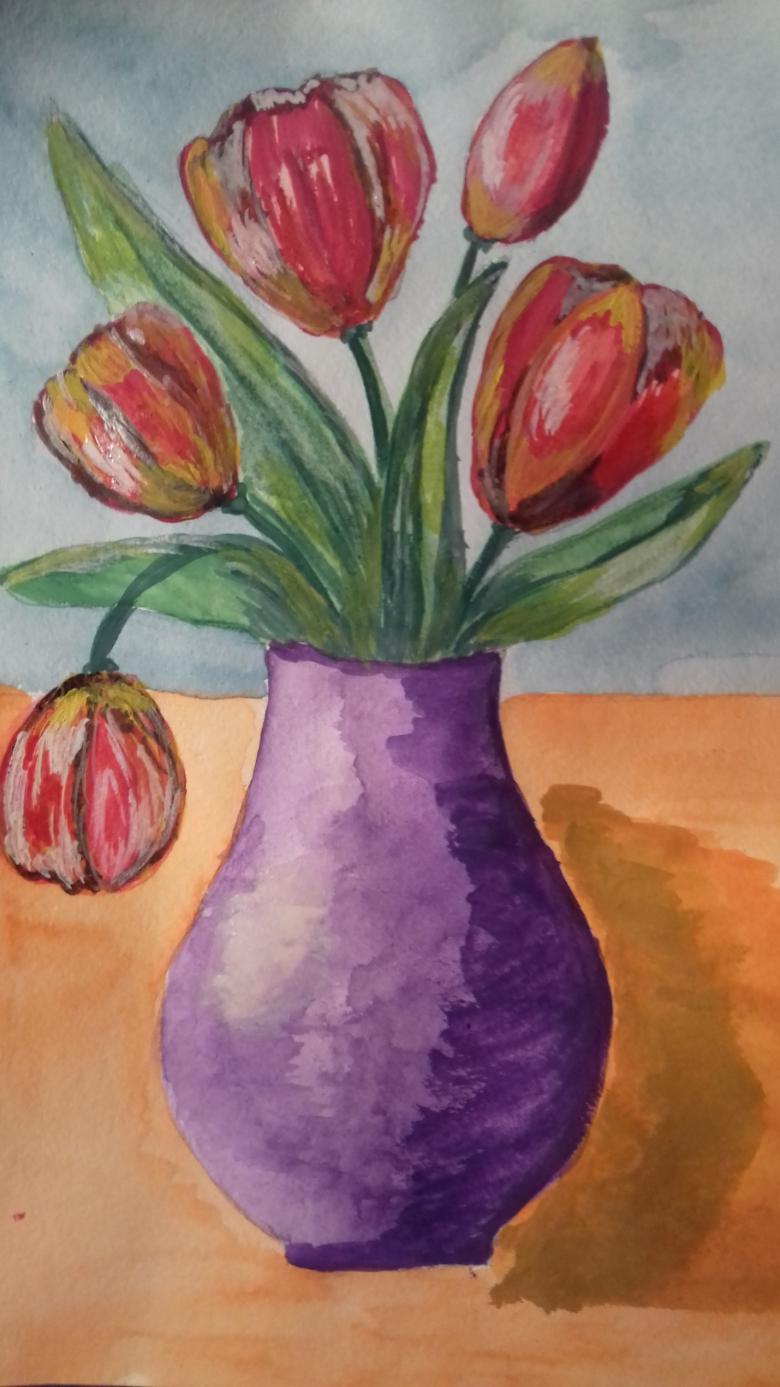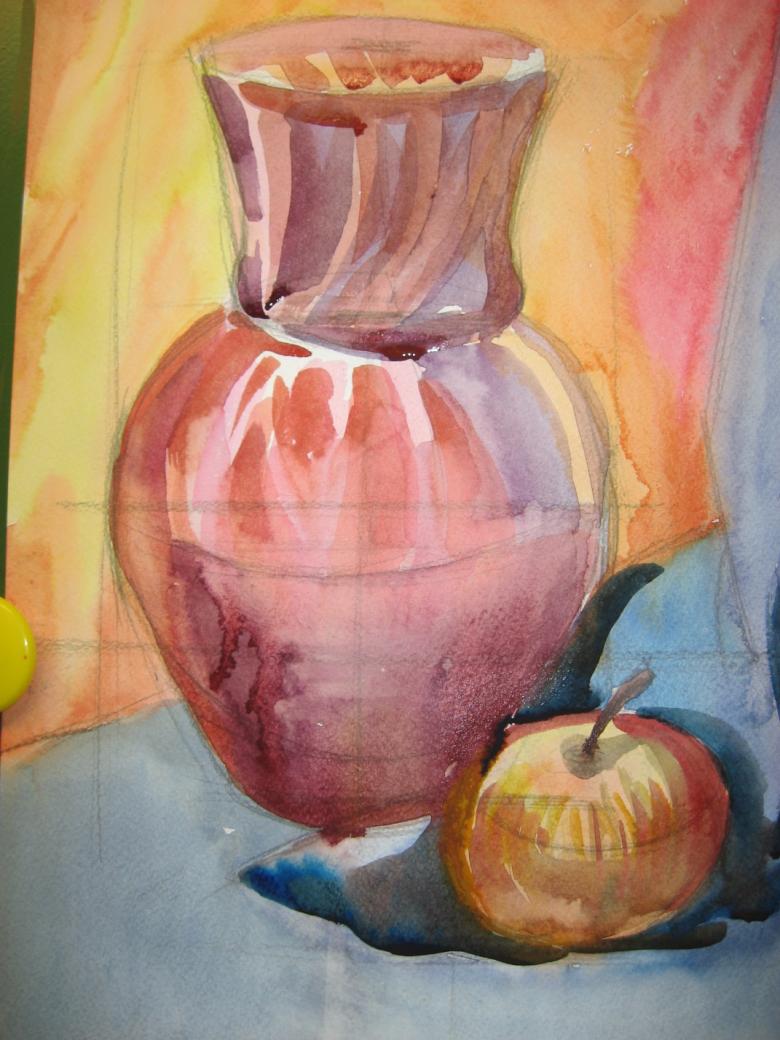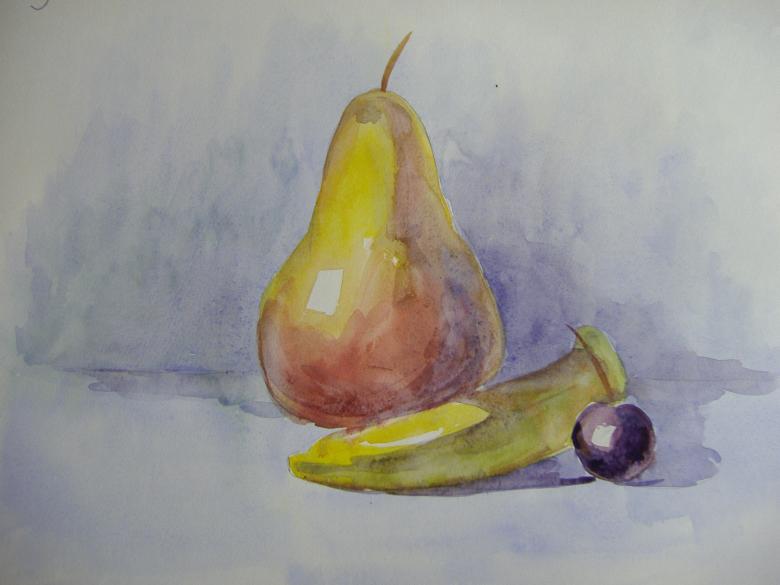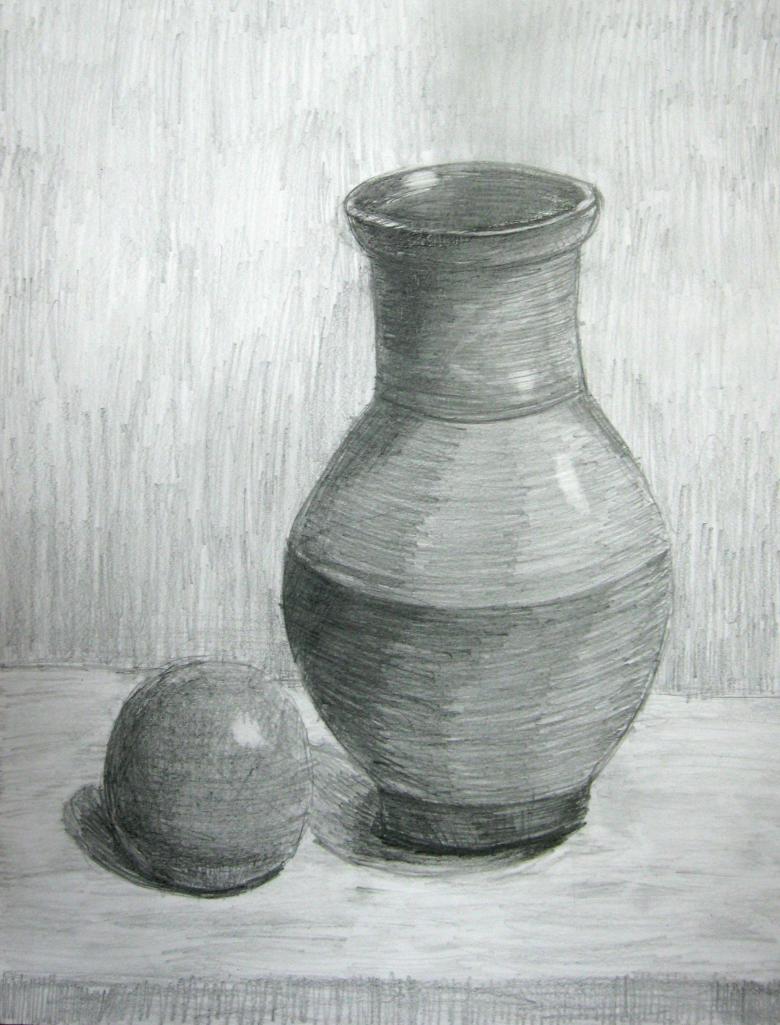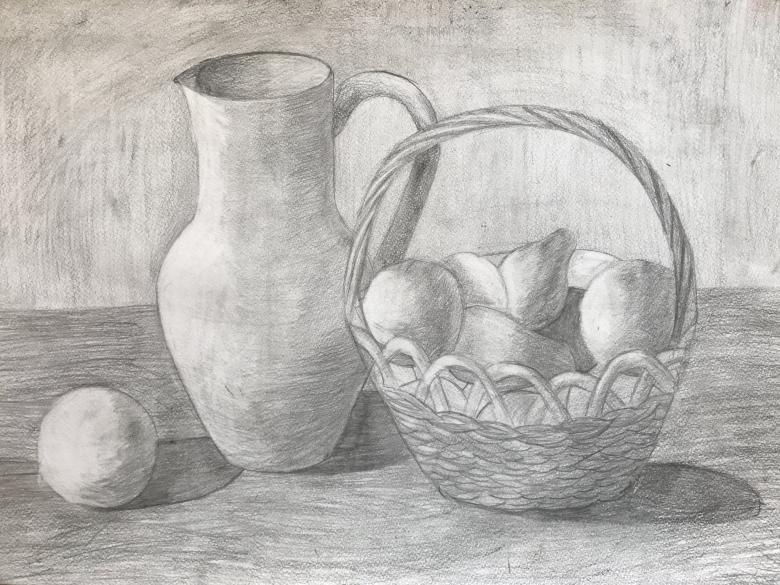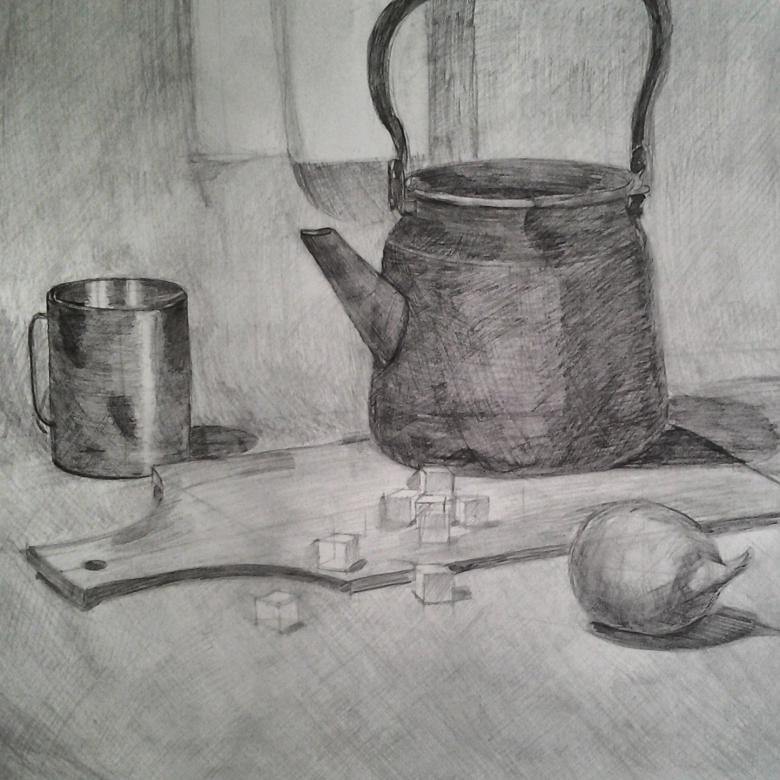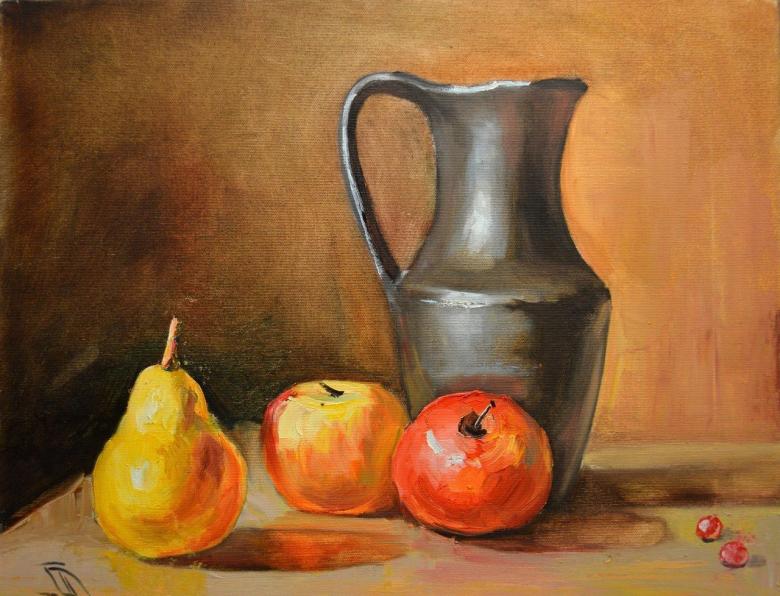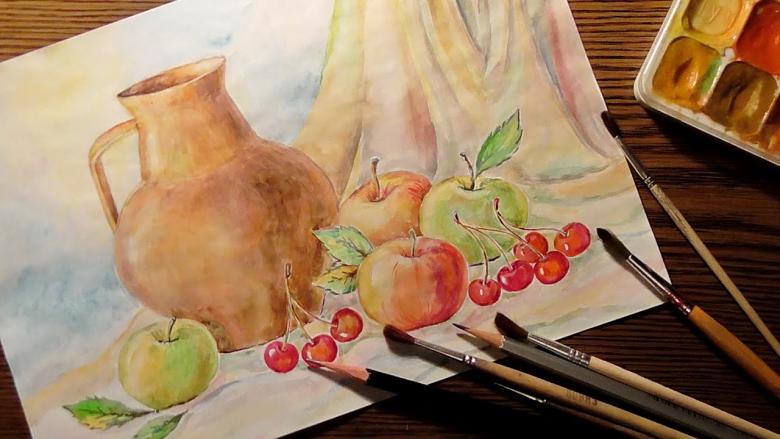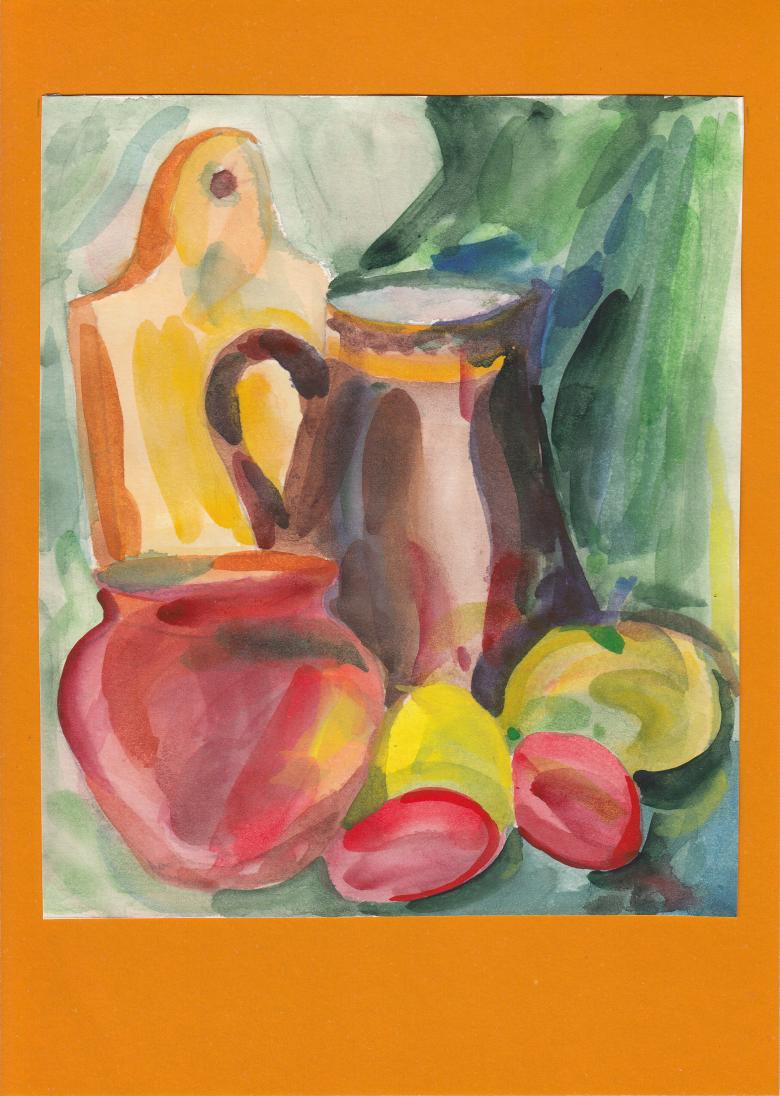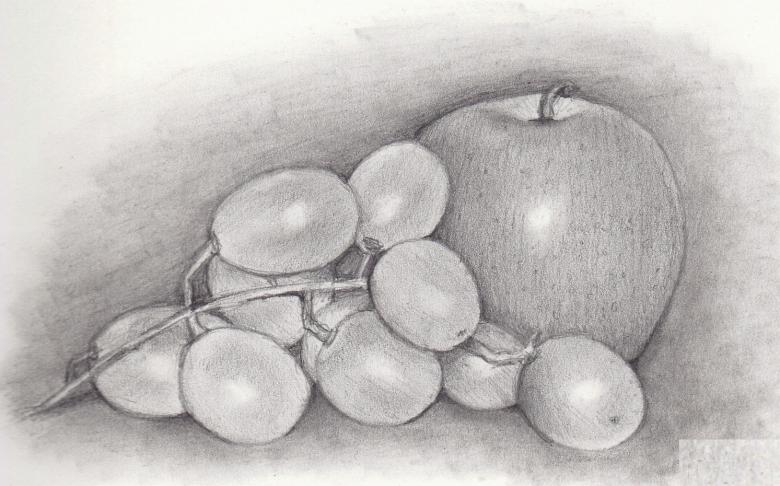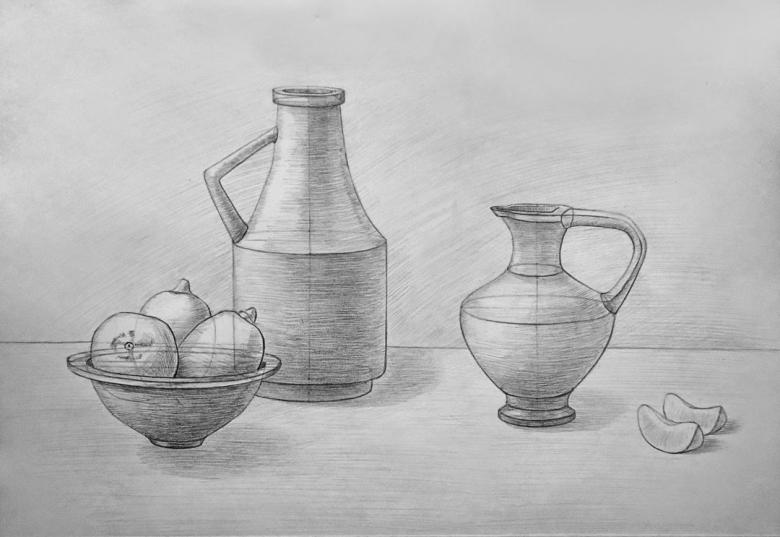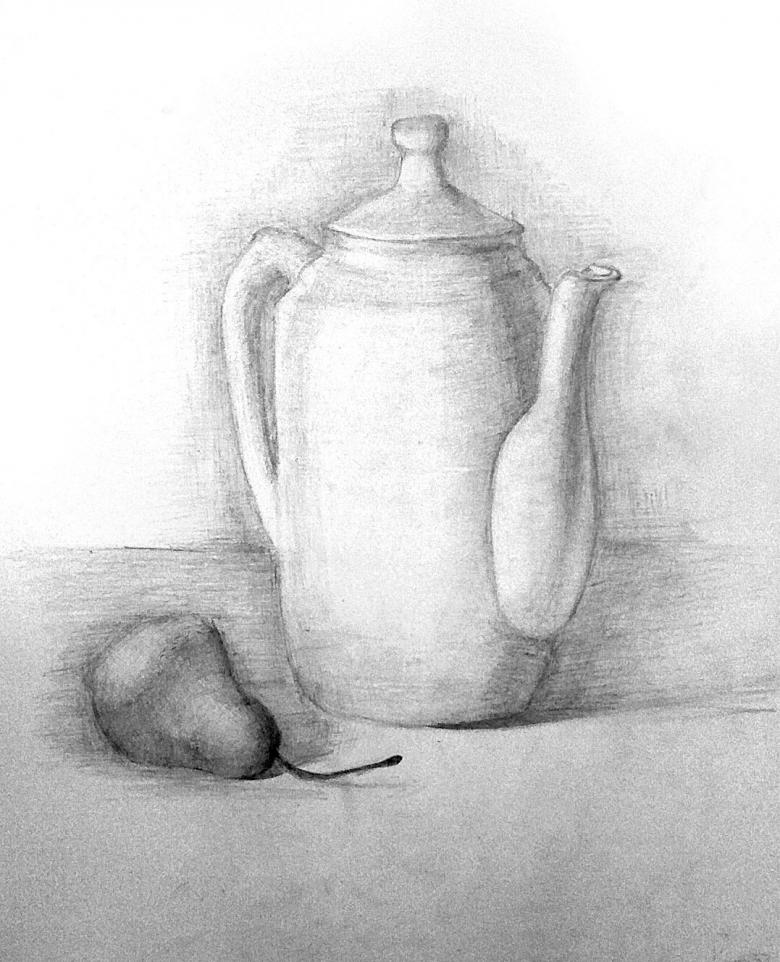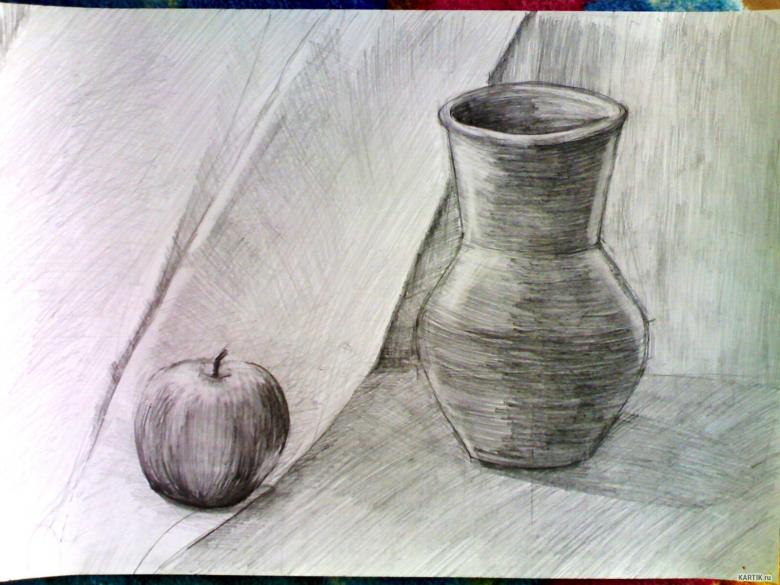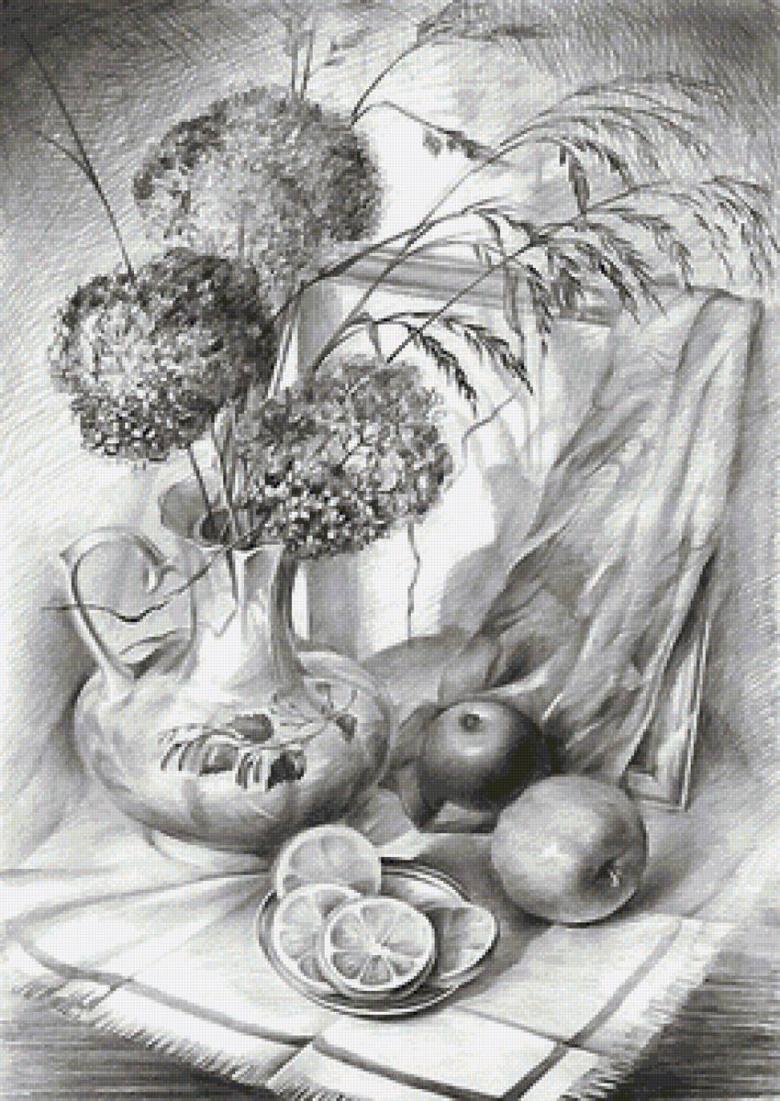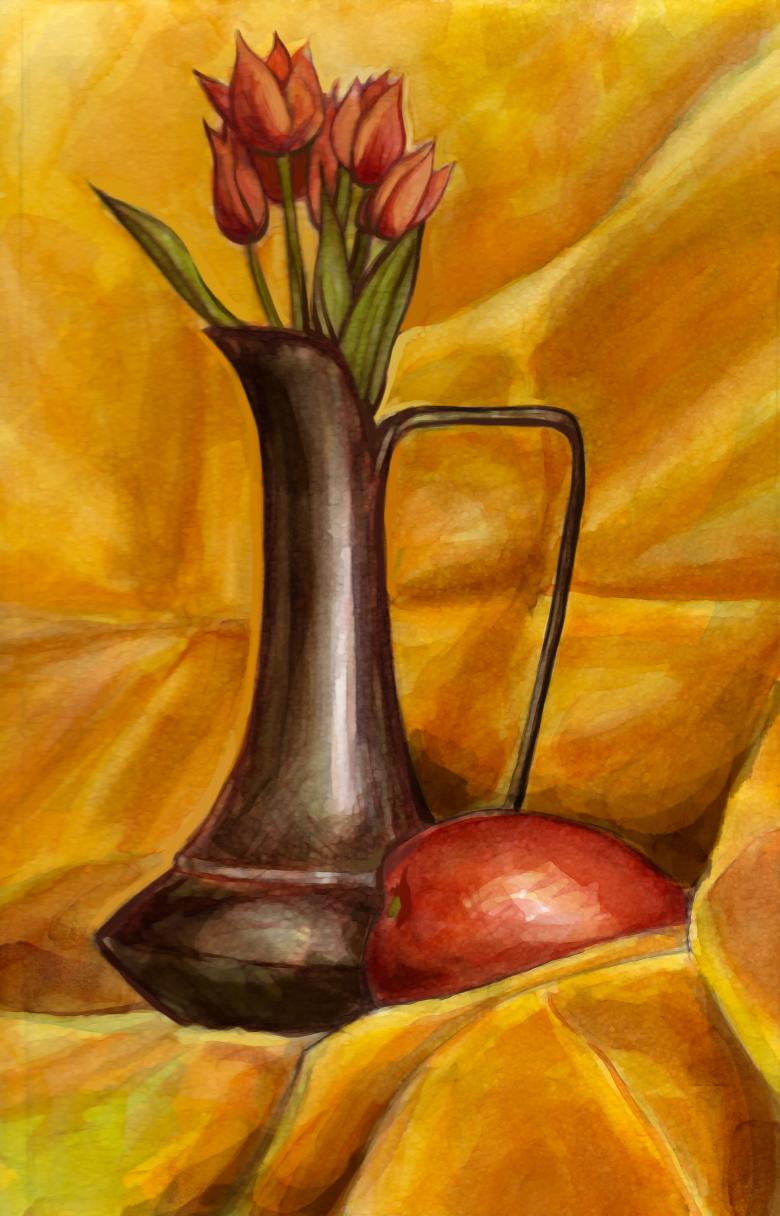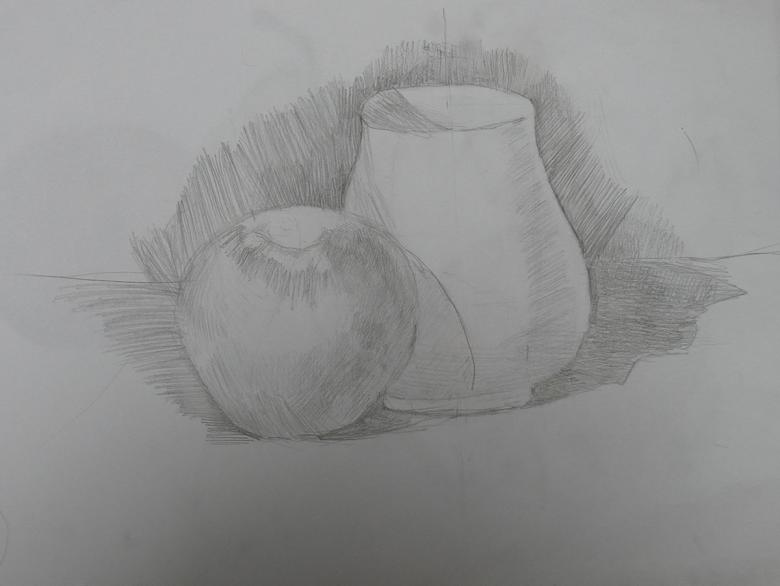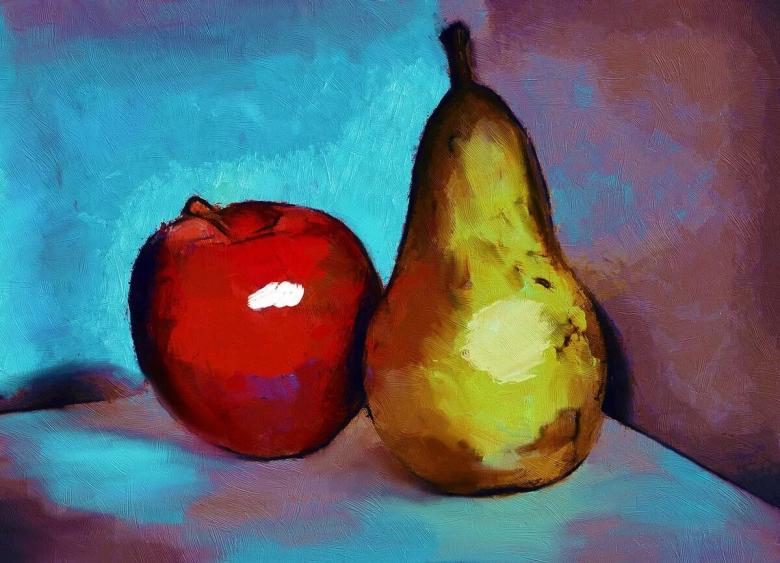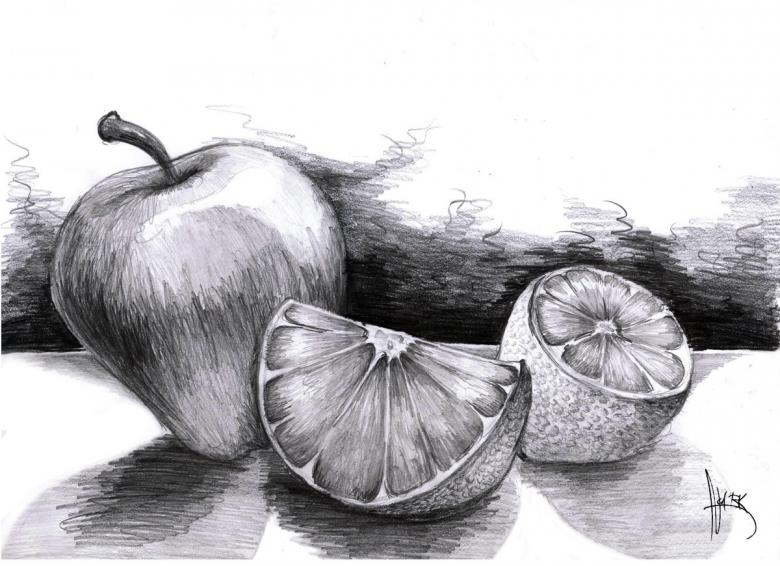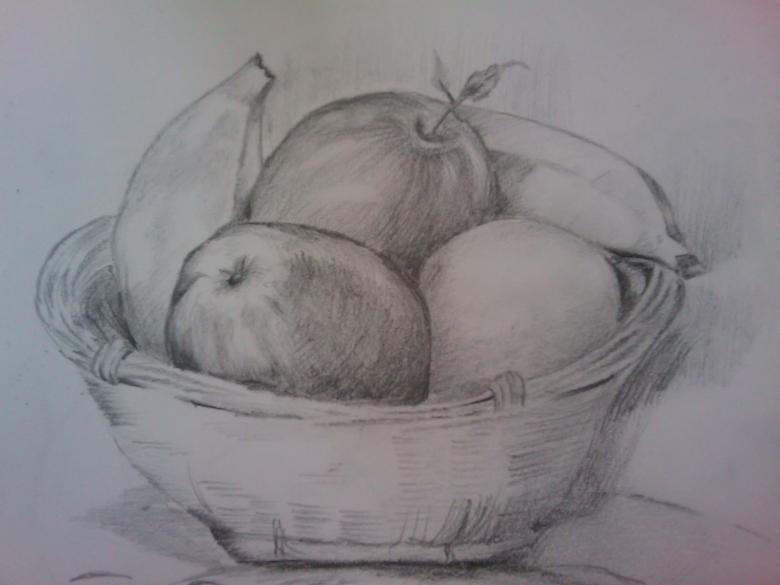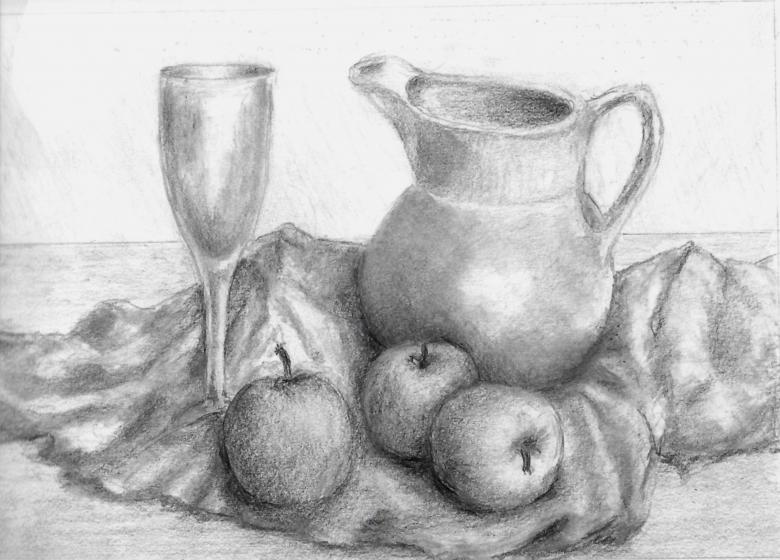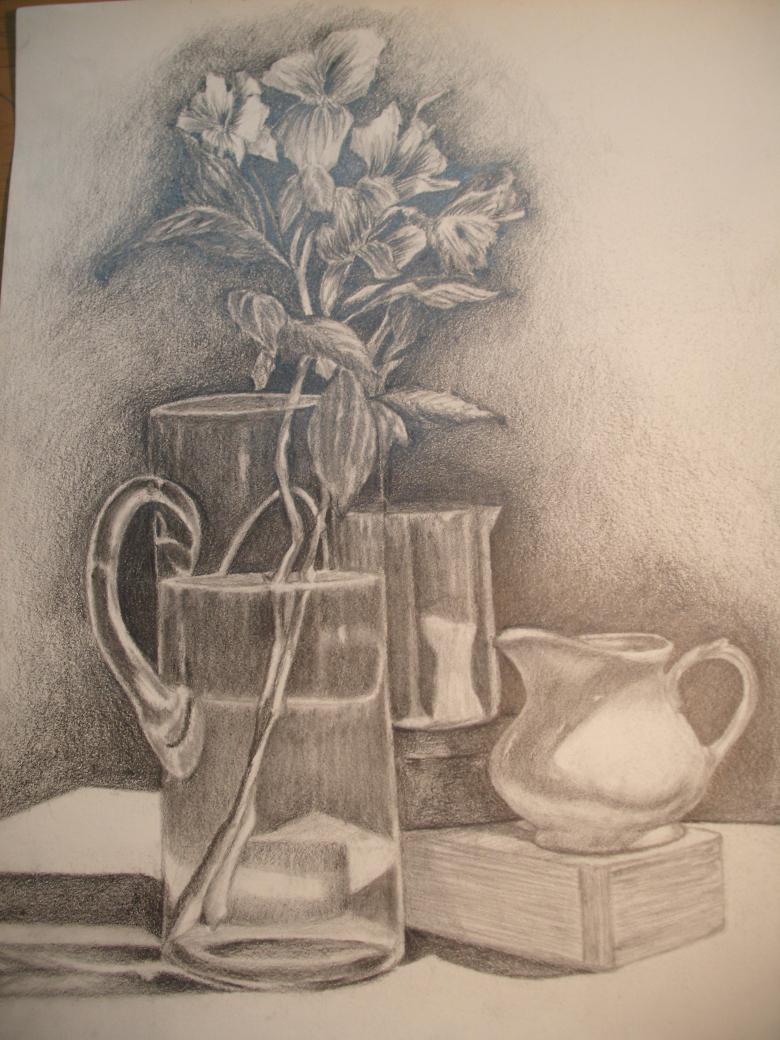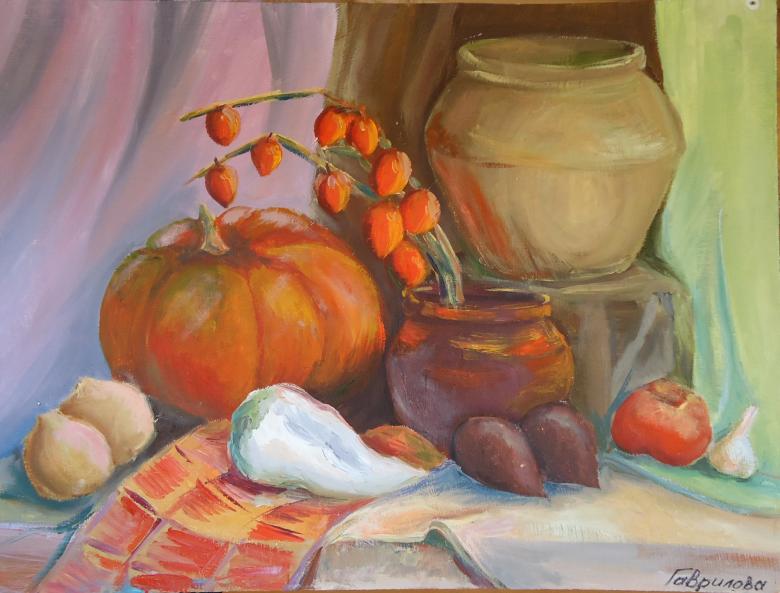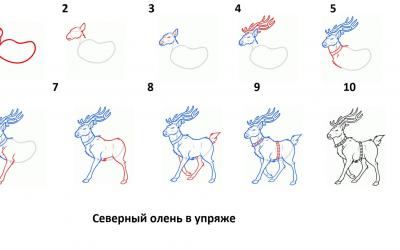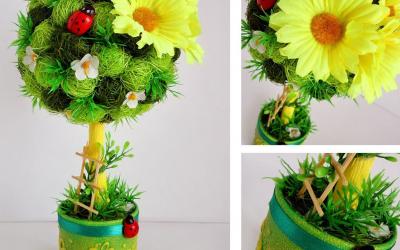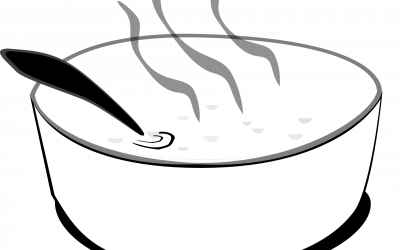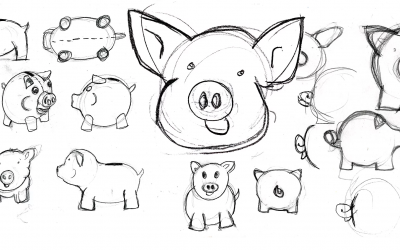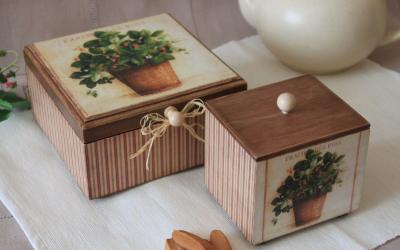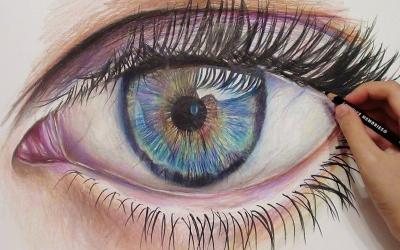How to Draw a Still Life with Pencil, Watercolor - Step-by-Step Master Classes for Beginners
Knowing how to draw a still life is an important part of learning the basics of painting. There are several uncomplicated artistic techniques, mastering which will help to cope with this task.
How to prepare a composition
To learn how to draw still life, you need to be able to intelligently select and place objects that will serve as a nature.
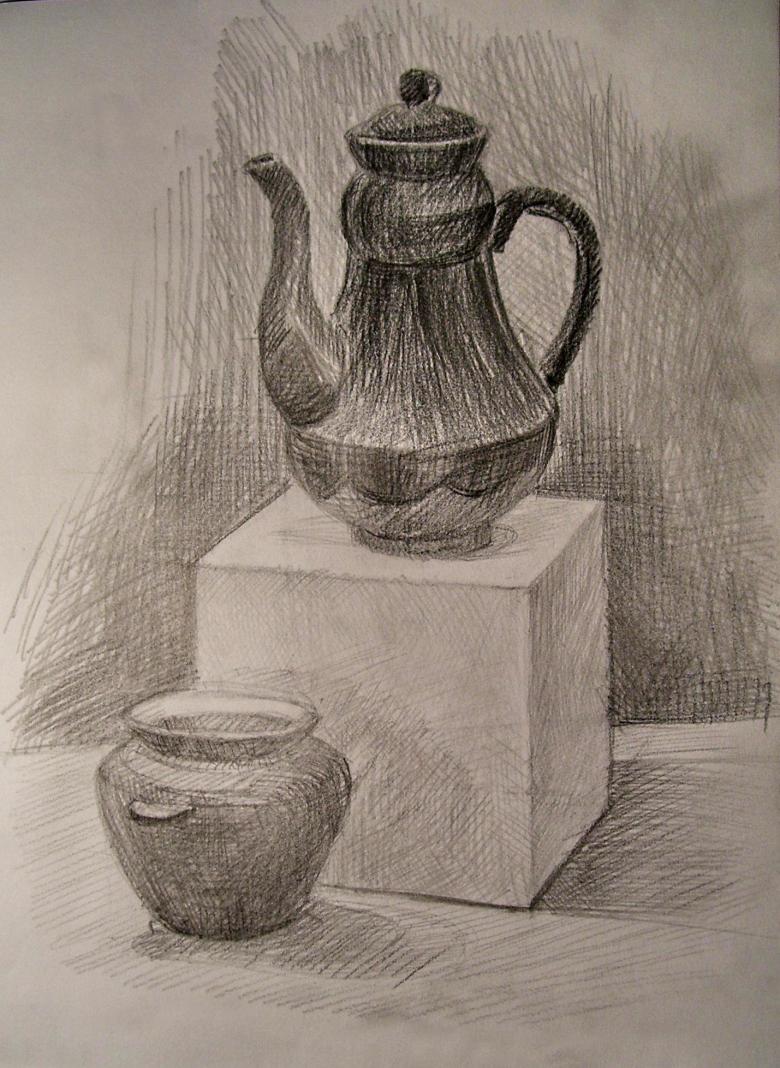
Fulfill this task can help a few simple rules.
- Objects for the composition must be united by subject.
- It is important to know how to place them correctly.
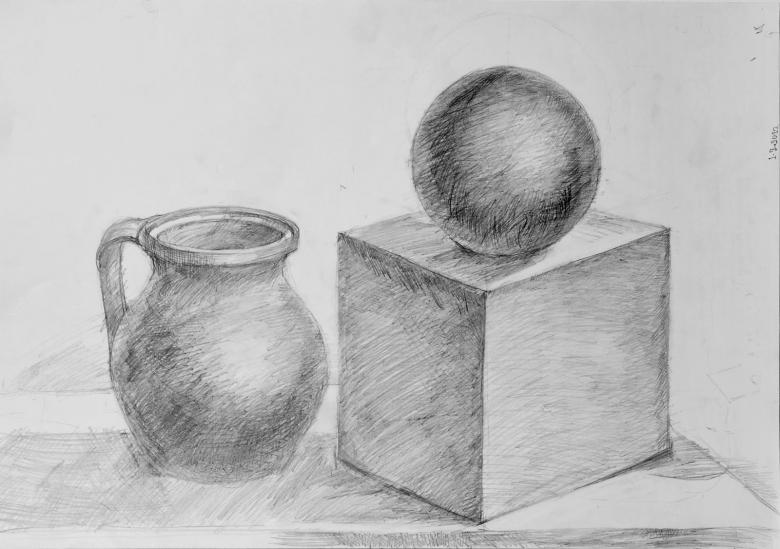
Arrangement of objects
When creating a composition, it is necessary to determine the scheme of arrangement, the basis and the format of the picture.
The format of the image can be horizontal, round or vertical, respectively, and the composition is formed according to this principle.
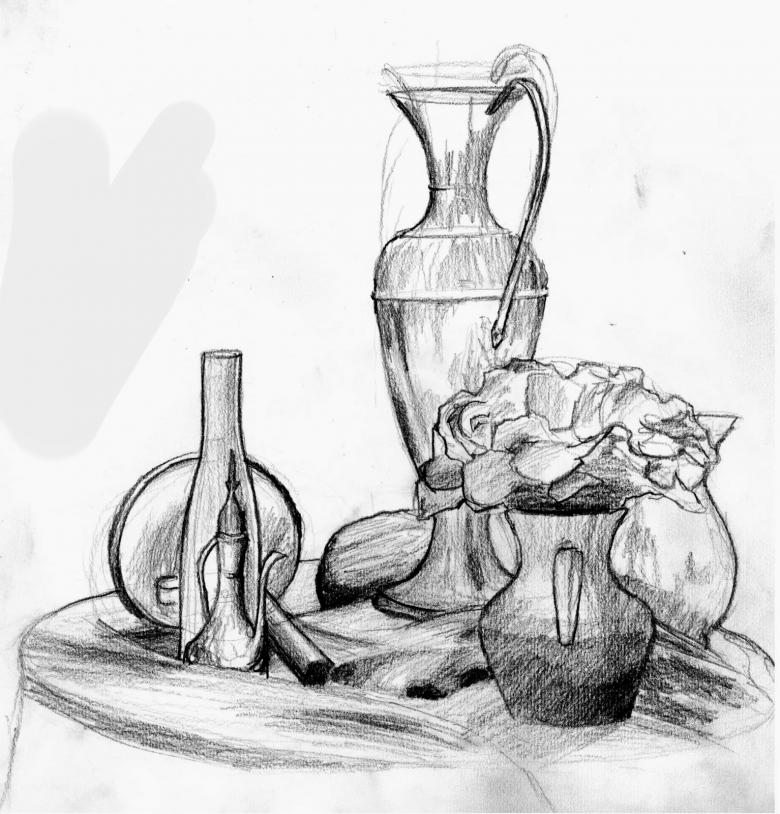
Horizontal helps to accommodate a greater number of objects for the image, but to create a harmonious picture requires drapery on the background. The main emphasis should be made in the very center of the composition.
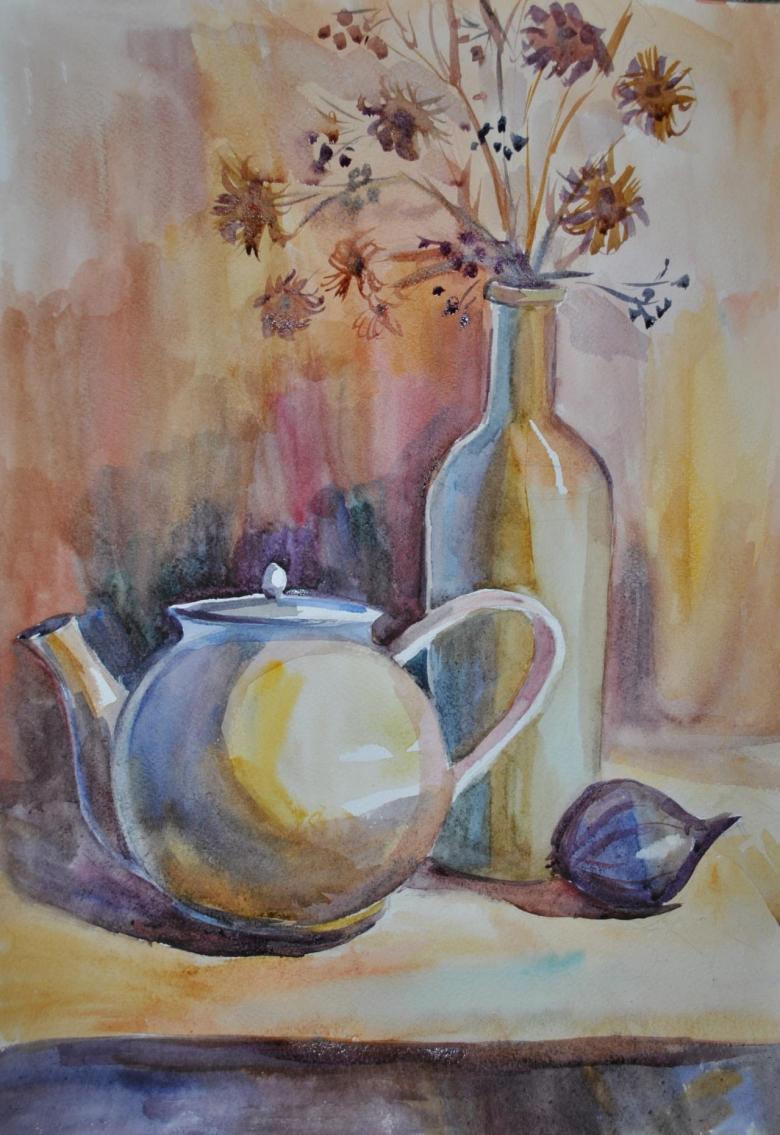
Round format is not very popular, as it is not the most convenient option.
The vertical format implies a small number of objects in the picture. An example of such placement would be tall vases with flowers.
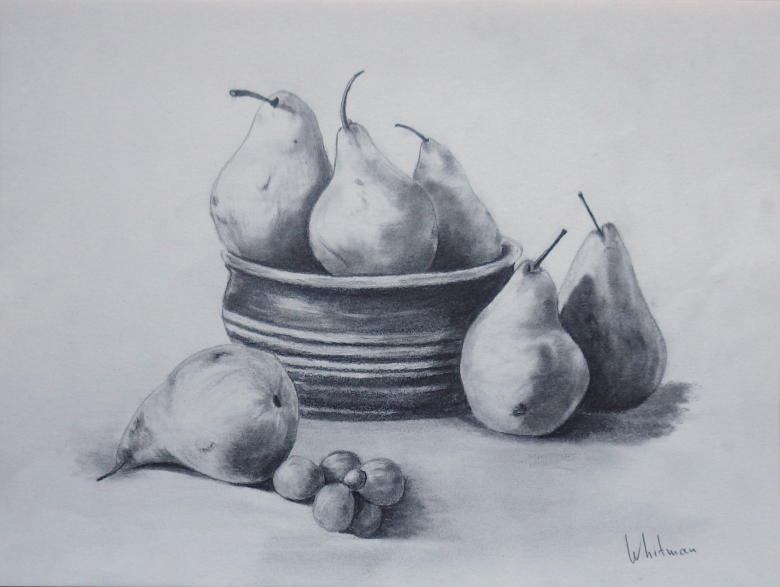
You can place the elements of the composition in several ways.
With triangular placement, the apex of the supposed figure is formed by the tallest object, objects of lesser height form the base.
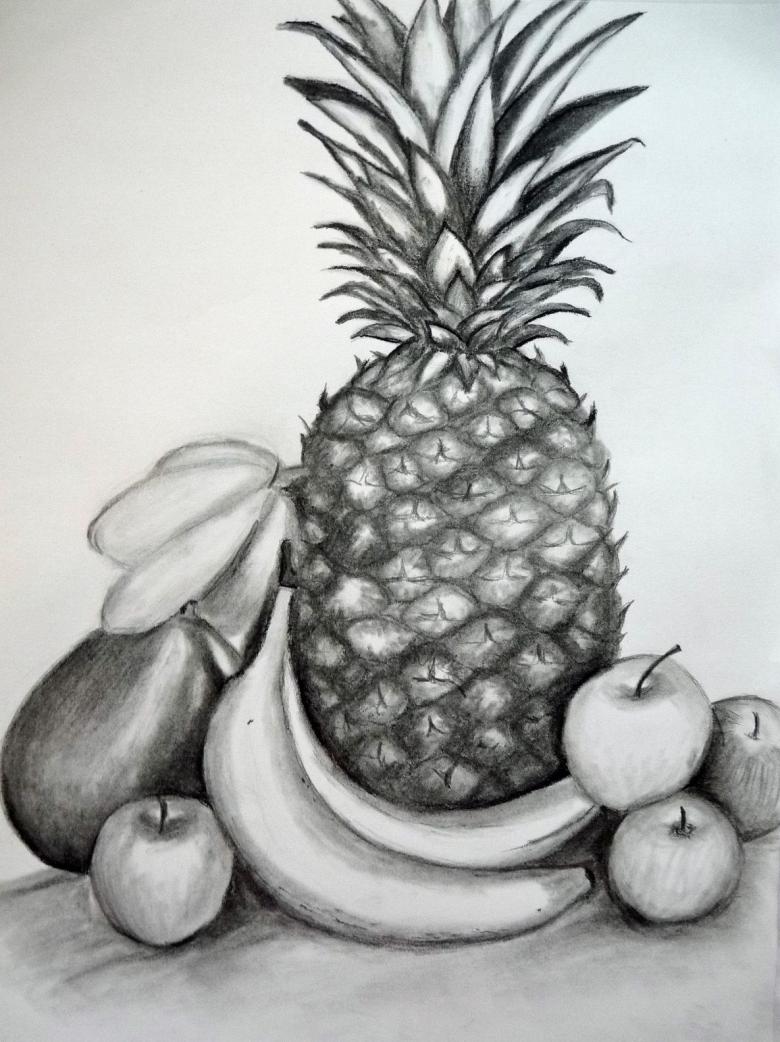
The objects that will serve as a still life nature can be arranged in a circle or diagonally.
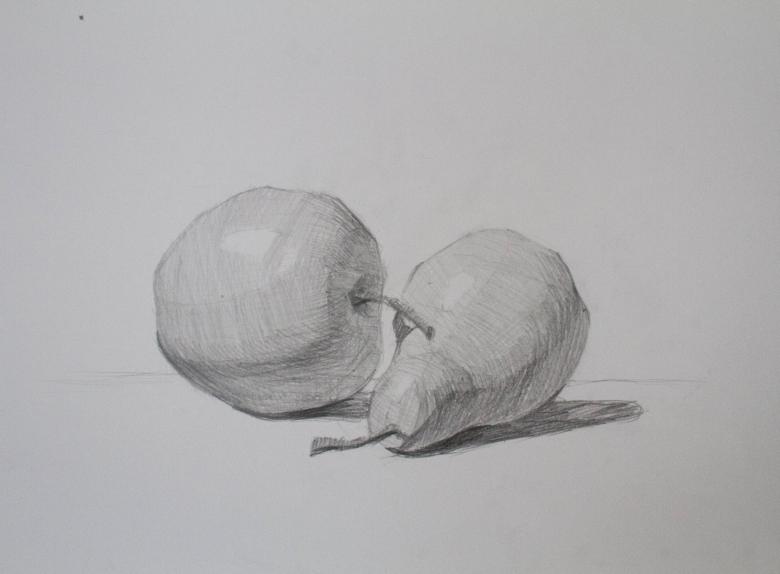
The main secret is not to line them up in a row, in which case the picture will come out boring.
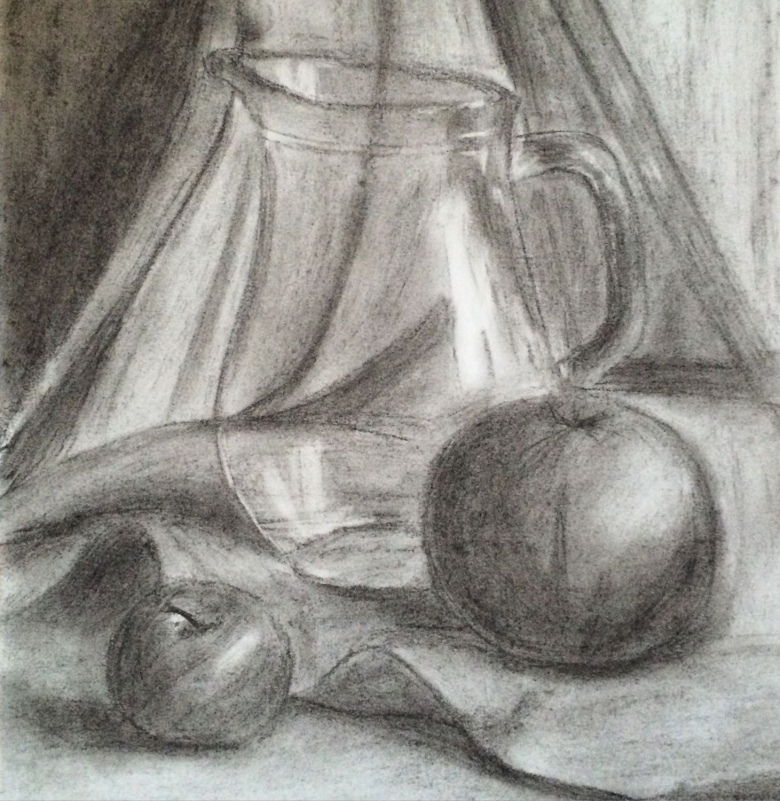
Objects can slightly overlap each other, gaps between them are allowed.
It is important not to overload the composition by extra objects, for this should not use more than three sizes.
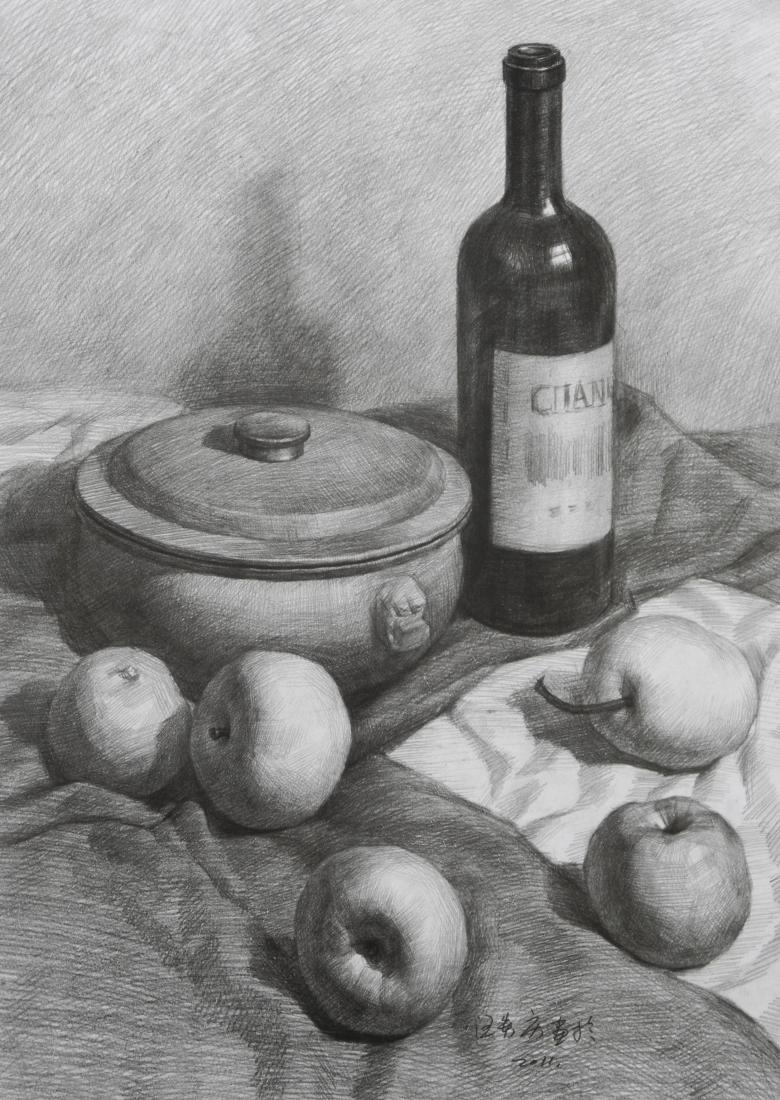
Another component of success will serve properly exposed lighting, it will help to accentuate the picture.
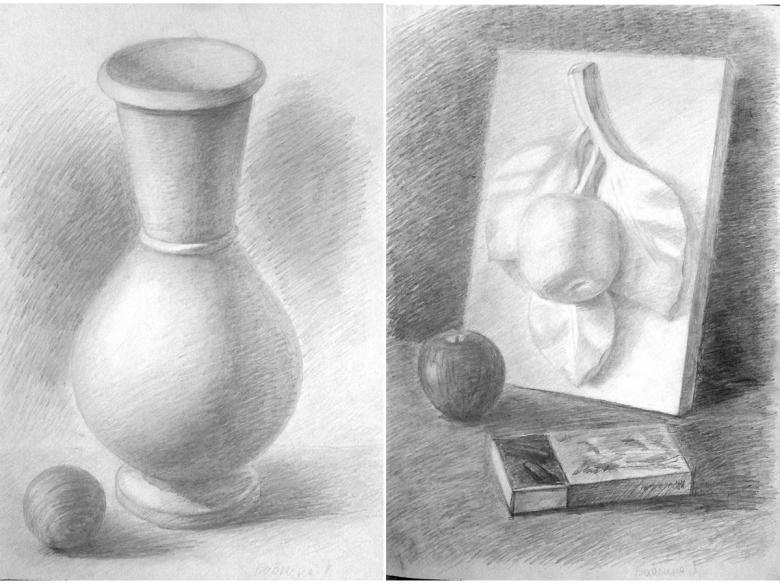
Correlation of colors
Another important rule for creating a still life is the rule of three colors, which should form the base of the picture. It is necessary to choose two or three primary colors and boldly use their shades.

A picture depicting a motley bouquet of flowers has two dominant colors in any case. You can focus on white daisies or red poppies, avoiding unnecessary mottling, tiring the eye.
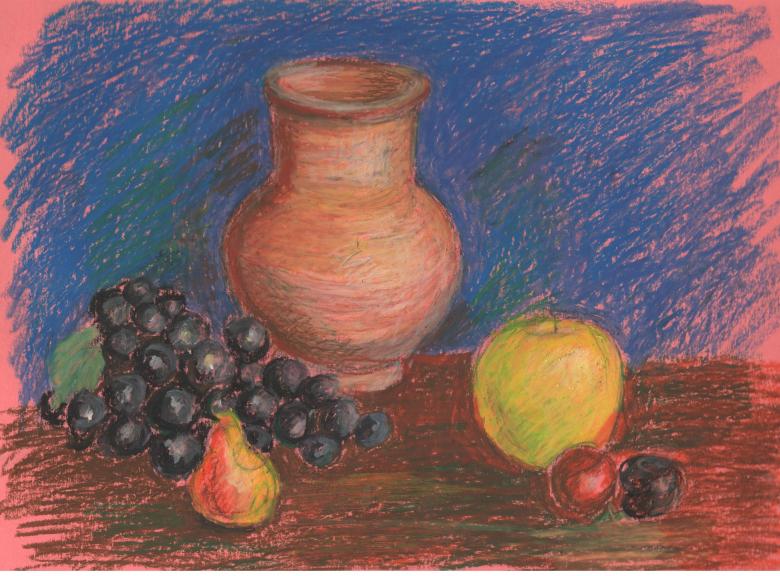
Highlight the main detail
The art of creating a still life begins with the ability to correctly place objects in a composition. You should start from life or from memory by identifying the main element that will capture the viewer's attention.
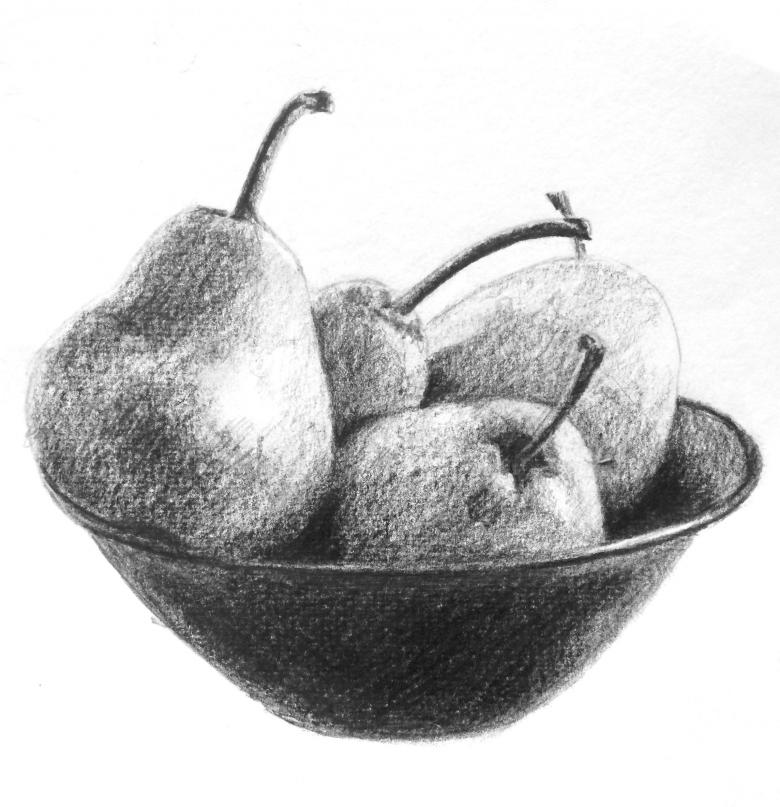
If there isn't such an object in the created composition, then it's necessary to work on it additionally.
This main object should highlight the size, color or shape. One of the flowers in the bouquet or the fruit in the composition should stand out noticeably.

This rule applies not only to painting, but also to artistic embroidery, photography, and even creating interior compositions.
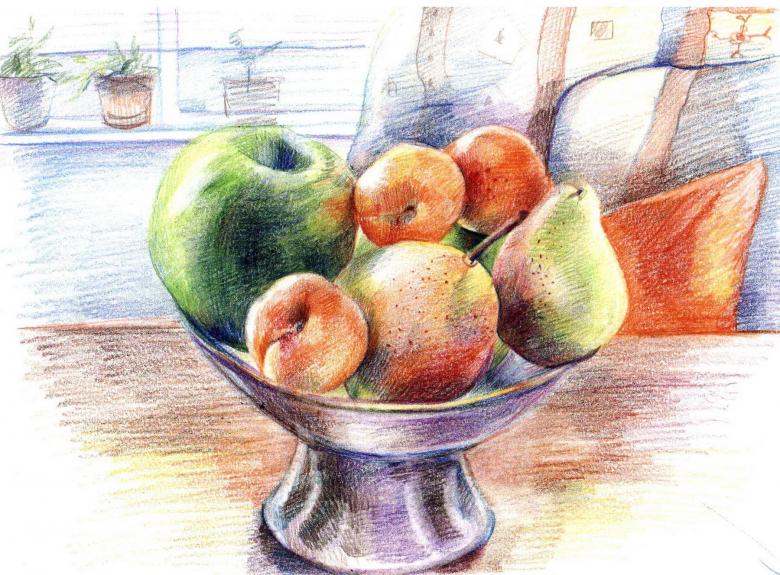
How to draw a still life step by step
A simple still life with pumpkins will help to draw step-by-step instructions for beginner artists.
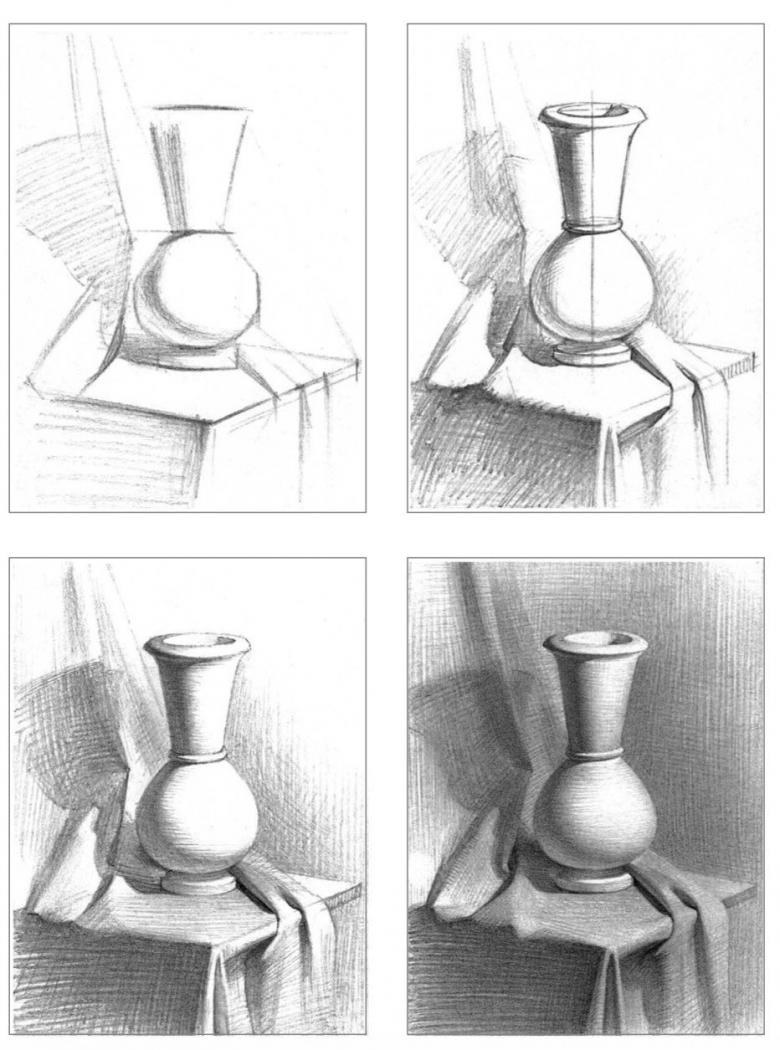
For work it is necessary to stock up:
- A scrapbook page,
- A straightforward pencil, eraser and sharpener,
- brushes,
- 12 colors of gouache,
- water in a small container.
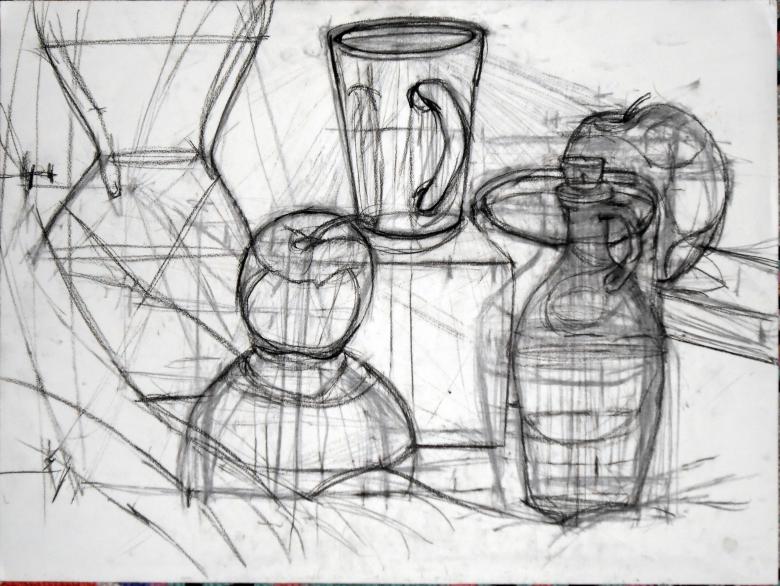
Order of work.
- The first line is to mark the edge of the table on which the composition is placed.
- After that, outline the outlines of both pumpkins.
- Draw the stalks of the vegetables, mark the grooves on the surface of the pumpkins.
- Below the contours of the pumpkins, depict a pair of onions and a red pepper.
- Work with paints should begin with the filling of the background. The background can be painted in light blue.
- A large pumpkin can be painted in orange, having previously marked yellow grooves on it. Painting the pumpkin, you should take care about the smooth transitions of color: the strokes should not be uniform in shade.
- A small pumpkin can be painted yellow and complemented with orange segmented stripes.
- Glimpses of light are depicted with light strokes of white paint.
- Vegetable stalks are decorated in green, using different shades to create depth of pattern.
- Onions will be light yellow with a light brown hue, peppers should be painted in red.
- The surface of the table and the shadows on it, falling from the objects, painted in different shades of brown.
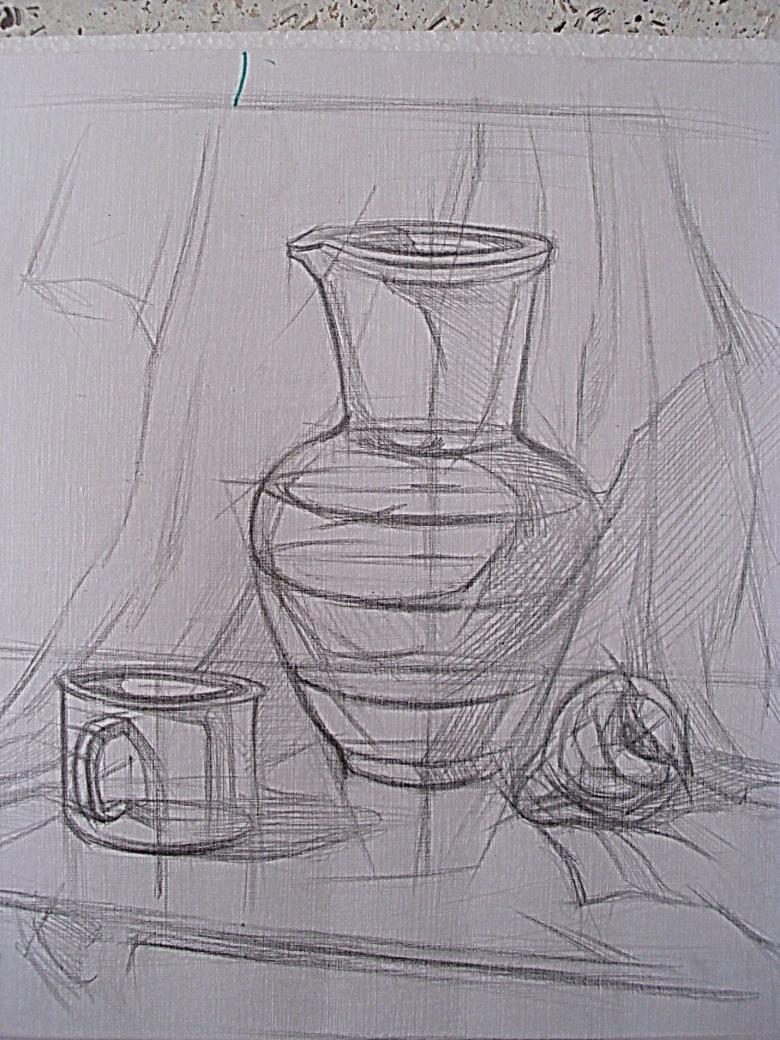
Still Life with a Simple Pencil
You can learn the art of drawing by starting with pencil sketches. For the first lesson, you can take a vase as an object, placing it on the background of drapery.

For work it is necessary to prepare:
- a sketchbook sheet,
- a sheet of paper, a pencil,
- A sharpener and eraser.
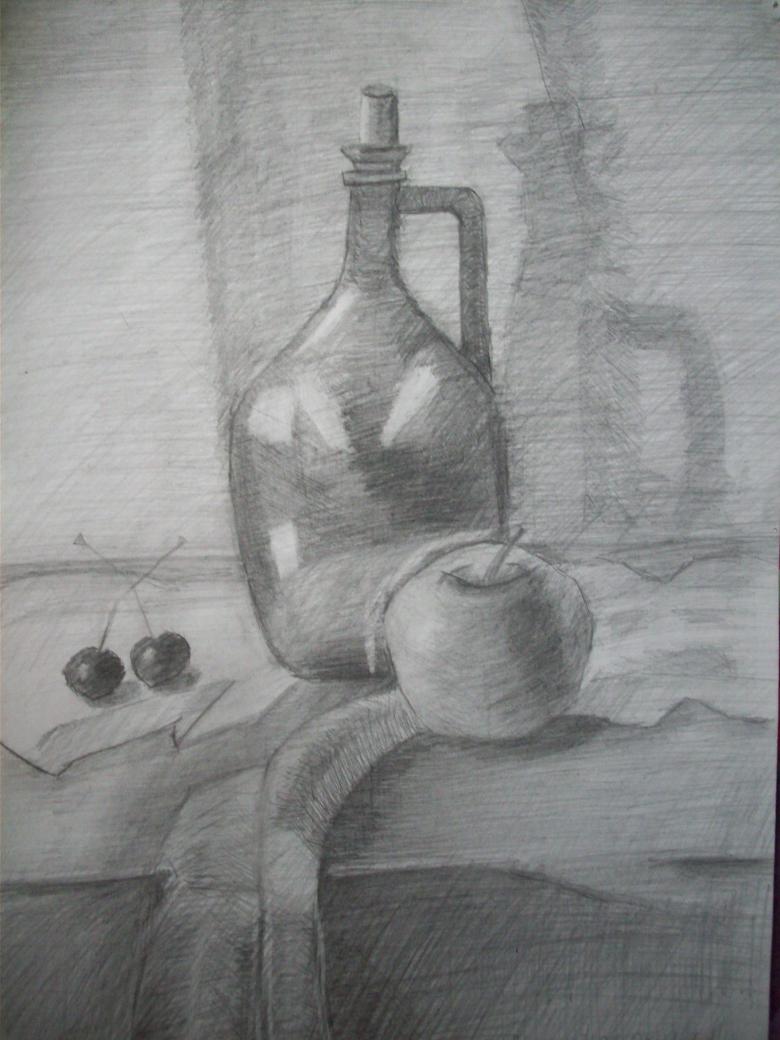
Order of work.
- The first thing to do is to draw the horizon line and the outline of the object on the sheet. It is recommended to trace that the image is placed in the center of the sheet. Some space should be left on top, it will be seen that the objects are on a flat surface.
- Transferring the visual image on paper, it is important to observe the proportions. To do this simply by using a pencil, measuring the size of the elements of the composition.
- The outlines of objects are always based on a simple geometric shape. The bottom of the vase is an ellipse. It is important to correctly transfer the shape of objects and maintain all proportions.
- Having clarified the proportions, auxiliary lines can be removed, and the contours of objects can be drawn clearly. Highlight the center of the composition.
- Volume in still life is given with the help of shading. Big spots can be outlined beforehand and shadows and highlights should be emphasized very thoroughly. A lot of attention should be paid to the folds of drapery.
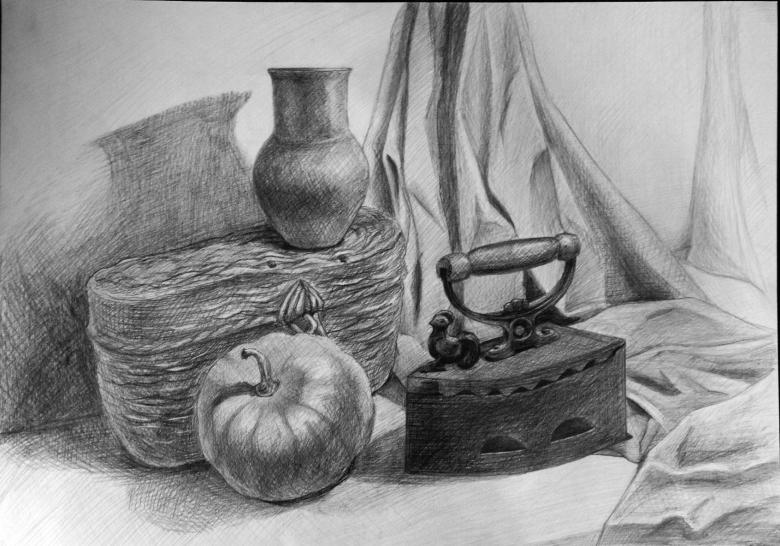
Highlighting shadows with a simple pencil shading is a simple skill, which is simply to develop with practice. For this purpose it is recommended to devote some classes to drawing the folds of matter. Skills of shading are useful for drawing any elements of still life.
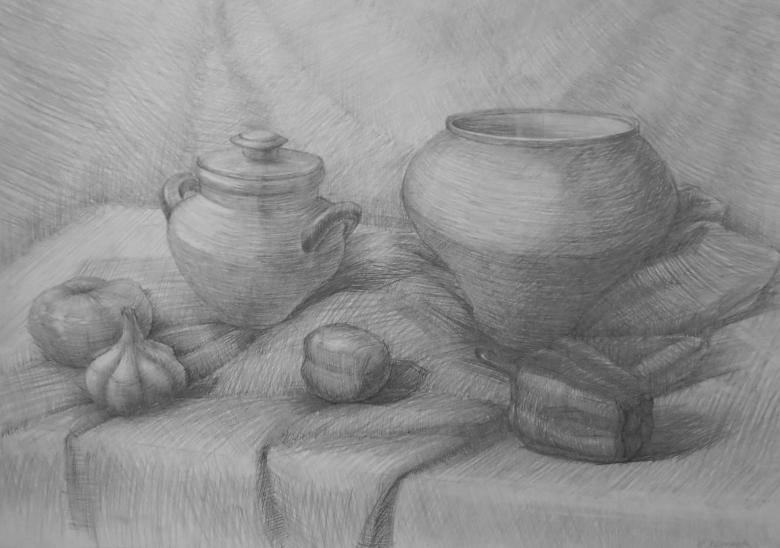
Still Life with Water Color
Forming a composition for watercolor sketch it is important to remember about the rules of color ratio. In watercolor works special attention is paid to color spots. Therefore it is necessary to think over the composition in detail.
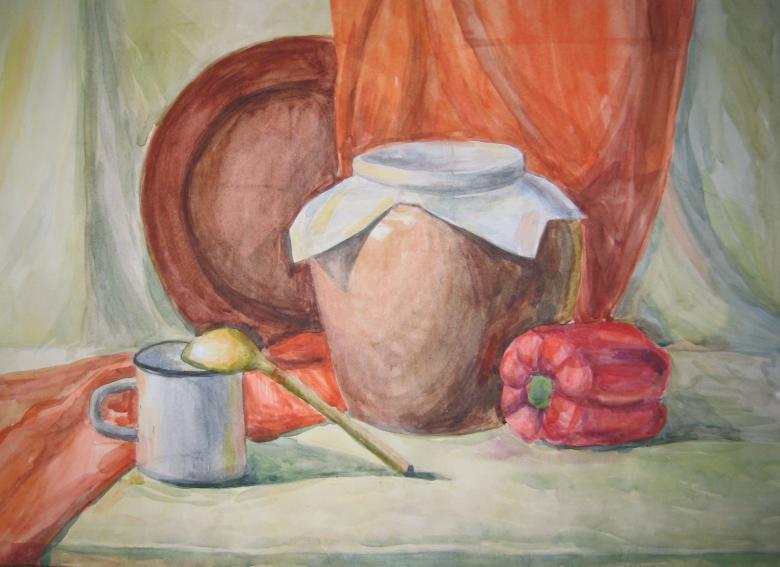
For the work you should prepare:
- watercolor paper,
- pencil,
- brushes,
- paints,
- a container of water.
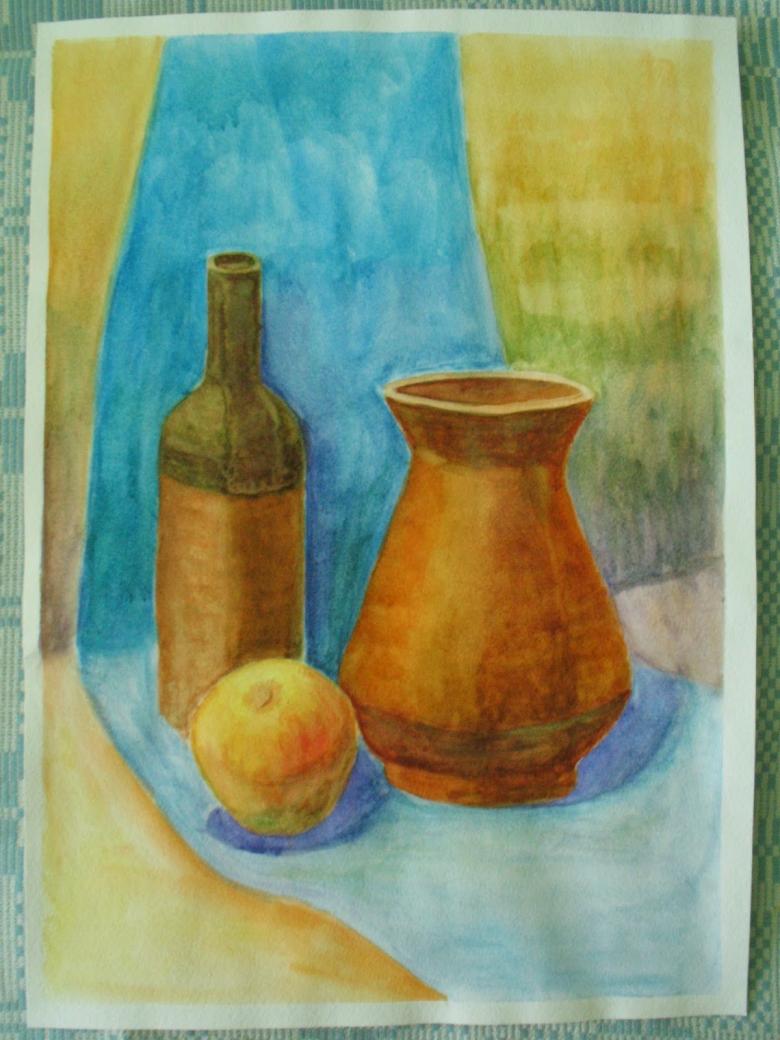
Order of work.
- On the sheet they mark the horizon line and the contours of the objects that make up the composition (fruit or vegetables in a vase, dishes, etc.).
- Observing the proportions, they draw the fine details.
- Work with watercolor starts with the largest spots of color. For example, a large jug, a large fruit, the background of the sketch.
- Then move on to the drawing of small elements.
- It is necessary to try to convey the play of light and shadow in the picture.
- Highlight the center of the composition.
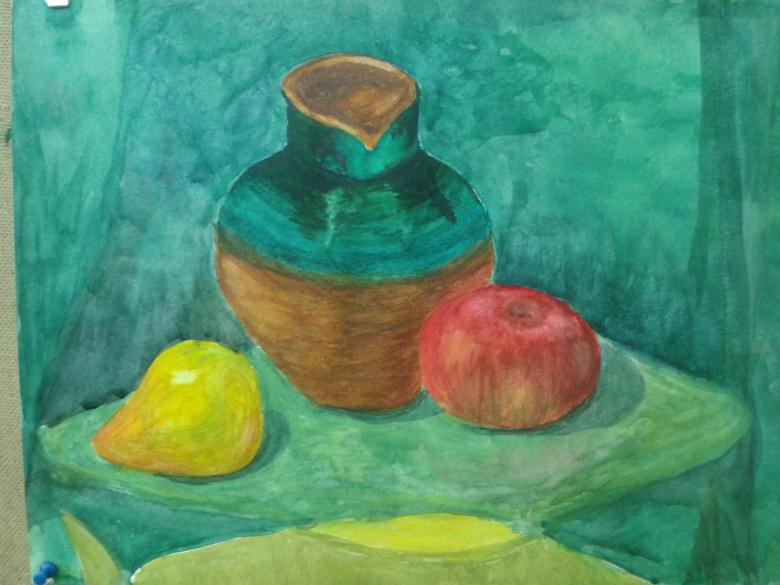
Success in many ways depends on properly selected nature. Creating a still life composition it is important to consider the color scheme and correctly place accents.
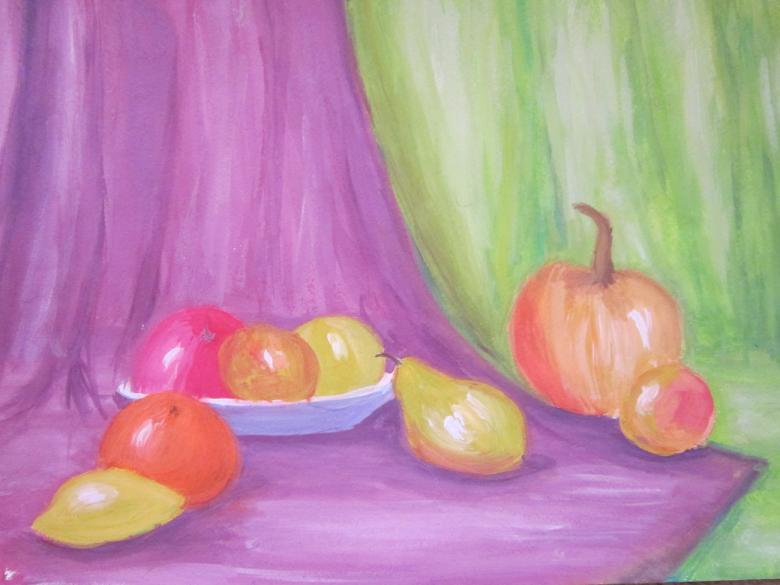
In the process of creating the sketch it is important to constantly control the proportions and their ratio in the sketch. A good watercolor sketch can turn out even for a beginner with a well chosen nature.
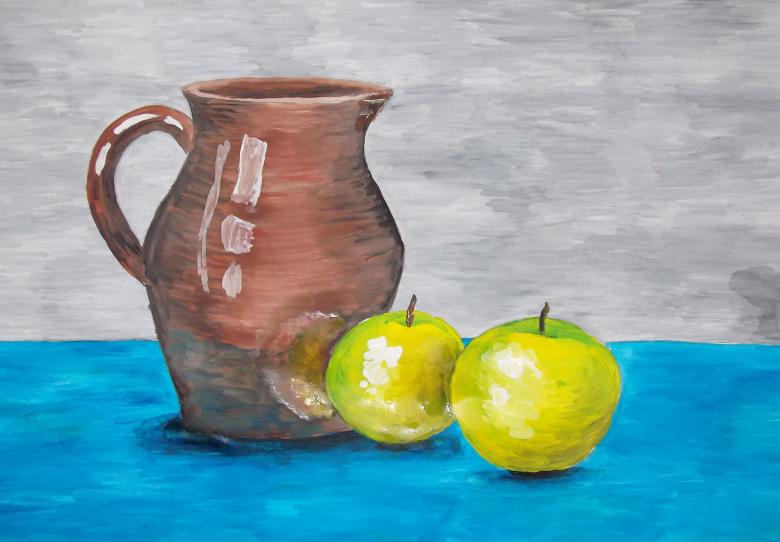
By following the basic rules of composition and placement of lighting, you can create a great still life without having the talent of an artist or much experience in painting.

